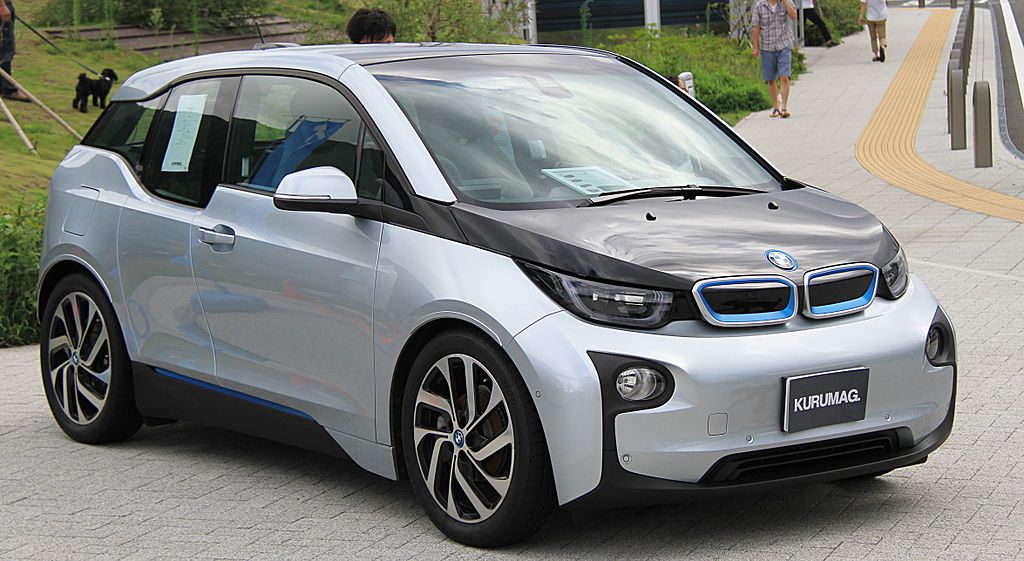More than two decades after the GM EV1, the first modern-era electric vehicle (EV) from a mainstream carmaker, went on sale in 1996, EVs finally look like they’re here to stay. What’s more, the recent success of cars such as Tesla Model S, Model X and Model 3, Nissan Leaf and Renault Zoe, as well as tightening environmental regulations in many developed countries, suggest that EVs may in fact replace internal-combustion engine (ICE) cars before long.
In light of this almost every carmaker in the market is trying to figure out how to bring EVs to the customers in a way that will be cost-efficient, deliver a desirable product, and convince customers to choose their car over their competitors’. Below, we consider the four main paths carmakers can take, and attempt to think through the pros and cons of each approach. As always, let us know what you think, whether you think if we missed something or want to add your point-of-view, and of course, participate in the poll below.
1. Electric versions of existing models from existing brand
Examples: Chevrolet Spark EV, Fiat 500e, Ford Focus Electric, Honda Fit EV, Kia Soul EV, Mitsubishi i-MiEV, Smart Electric Drive, VW e-Golf and e-Up!
The first of the four paths may seem like the simplest one, but is actually far from straightforward from an engineering perspective, as electric drivetrains require very different components than ICE vehicles. The reason carmakers take this path probably has less to do with savings associated with using the body from an existing model, and more to do with targeting customers who prefer their EVs to look, feel and drive as close to a conventional ICE vehicle as possible. While this category is not where the first modern EVs emerged, it is currently the most populous one, with most mainstream carmakers offering at least one electric version of a model in their line-up. However, most of these models seem to have met with rather moderate success, suggesting that this may not be the way of the future, especially as some carmakers are considering switching some models to electric drive only (think: Smart Coupe, VW Beetle).
2. Stand-alone model from existing brand, shared platform and packaging
Examples: Audi e-Tron, Mercedes-Benz EQC, Nissan Leaf, Renault Zoe
Rather than offer an electric version of an existing model, some carmakers instead choose to develop stand-alone models based on underpinnings shared with their mainstream ICE models. This was the path taken by Nissan when it chose to develop the trailblazing Leaf, based on a platform shared with the Pulsar, and by Renault, when rather than develop a Clio EV it instead developed the Zoe. With both these models being arguably the most successful EVs to date not called Tesla (Nissan Leaf is on course to sell more than 40,000 units in Europe in 2018, Renault Zoe over 30,000 units), it seems that the additional money carmakers spend on developing and marketing these unique models is well-spent. That is certainly what Audi and Mercedes-Benz seem to think, with both premium carmakers choosing to develop their first mainstream EV offerings on existing platforms, but offering them as stand-alone models alongside their existing cars (here the e-Tron is arguably more complimentary to Audi’s range, being more of a tall wagon placed between the Q5 and Q7, than the EQC is to Mercedes’ range, where it is very similar to the GLC and GLC Coupe). The downside to the platform-sharing is that the EVs don’t get the advantages of a unique platform, and often are either taller and/or longer, and handle less well than they otherwise could have.
3. Stand-alone model from existing brand, unique platform and packaging
Examples: BMW i3 EV, Chevrolet Bolt, Jaguar I-Pace, Porsche Taycan, Renault Twizy, VW I.D. Neo, Buzz, Beetle (rumored)
This is the “all out” path available to mainstream carmakers – rather than build EVs based on existing platforms, they can develop platforms specifically for their EV offerings. While this approach comes at a huge cost, as new platforms are very expensive to develop and certify, it allows the EVs to be optimized around their electric drivetrains to the benefit of packaging, safety, looks and ride/handing. BMW was an early trailblazer with the i3 EV, and seems to be doubling-down on this approach with the upcoming production version of the iNext concept, rumored to be called the i5. However, the uniqueness of the i3, as well as the new-for-2018 Jaguar I-Pace, don’t seem to be translating into huge sales so far: the i3 has never cracked 25,000 units/year in Europe and has fallen well below 10,000 in the US, while the I-Pace has had a very slow start. With these models, it seems that many customers have been turned off by their hard-to-pin-down positioning and non-traditional styling. In 2019 Porsche will hope it can do better with the Taycan, but the real test for this approach will come when Volkswagen launches its I.D. family of EVs. In fact, Volkswagen is so confident in the rightness of this approach, it is already heralding the I.D. hatchback (rumored to be called Neo) as its third “breakthrough” model, after the original Beetle and the Golf. Strong words indeed.
4. Electric-only brand, unique platform and packaging
Examples: Dyson (rumored), GM EV1, Nio, Rimac, Rivian, Tesla, Th!nk
The final way in which carmakers can bring EVs to customers is through a stand-alone brand that specializes in electric cars based on unique platforms. Arguably, this is how the first modern-day electric car, the aptly-named GM EV1, came to market – it was a completely unique car that General Motors thought should be marketed under the GM brand, the first time in history it has done this. Needless to say, the EV1 experiment did not quite pan out (total sales: 1,117 units). The second attempt at this model, the startup Tesla, has fared rather better. From its humble beginnings as the maker of the overpriced Roadster, it has since given the world the segment-altering Model S, Model X and, especially, the Model 3 – arguably the most successful and most important EV to date (annualized sales based on Q3’18 are over 200,000 units). Hoping to follow in Tesla’s footsteps are many startups, some more serious (Rivian) and some less so (Faraday Future), startup-style projects under larger brands (Dyson, Nio), as well as skunkworks projects (Rimac). The big question is whether the path of offering EV models under a new brand could be a good strategy for an existing car brand – so far only Volvo is attempting to do this with its Polestar offshoot, although in this case the platform for the Polestar 1 is very clearly based on the Volvo S90. And while there may be advantages to a “clean break” that a new brand affords, the costs of marketing and establishing a new distribution and servicing chain arguably outweigh those benefits.
In summary
Of the four paths considered, the last two are probably the most promising, although for different actors in the industry. If you’re an established carmaker, you’re probably best-off developing EVs based on unique platforms and offering them under one of your brands – the former to take advantage of the packaging, safety, looks and ride/handing benefits an EV-specific a platform can afford, the latter to benefit from the established brand cachet and to avoid duplicating costs of building up dealership and servicing networks. If you’re looking to enter the automotive industry from the outside, then building cars on a new platform and under a new brand is probably the only path available to you, and arguably it’s a path that would not be viewed as optimal by established carmakers. That said, one can envision electric versions of established models also having a future, especially for small-volume brands, and/or for ones that would prefer to have their EVs “fly under the radar” by looking much like their ICE offerings, for example Bentley, Land Rover or Rolls Royce.
Let us know your thoughts by leaving comments, and participating in the poll below:












